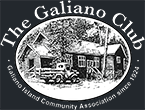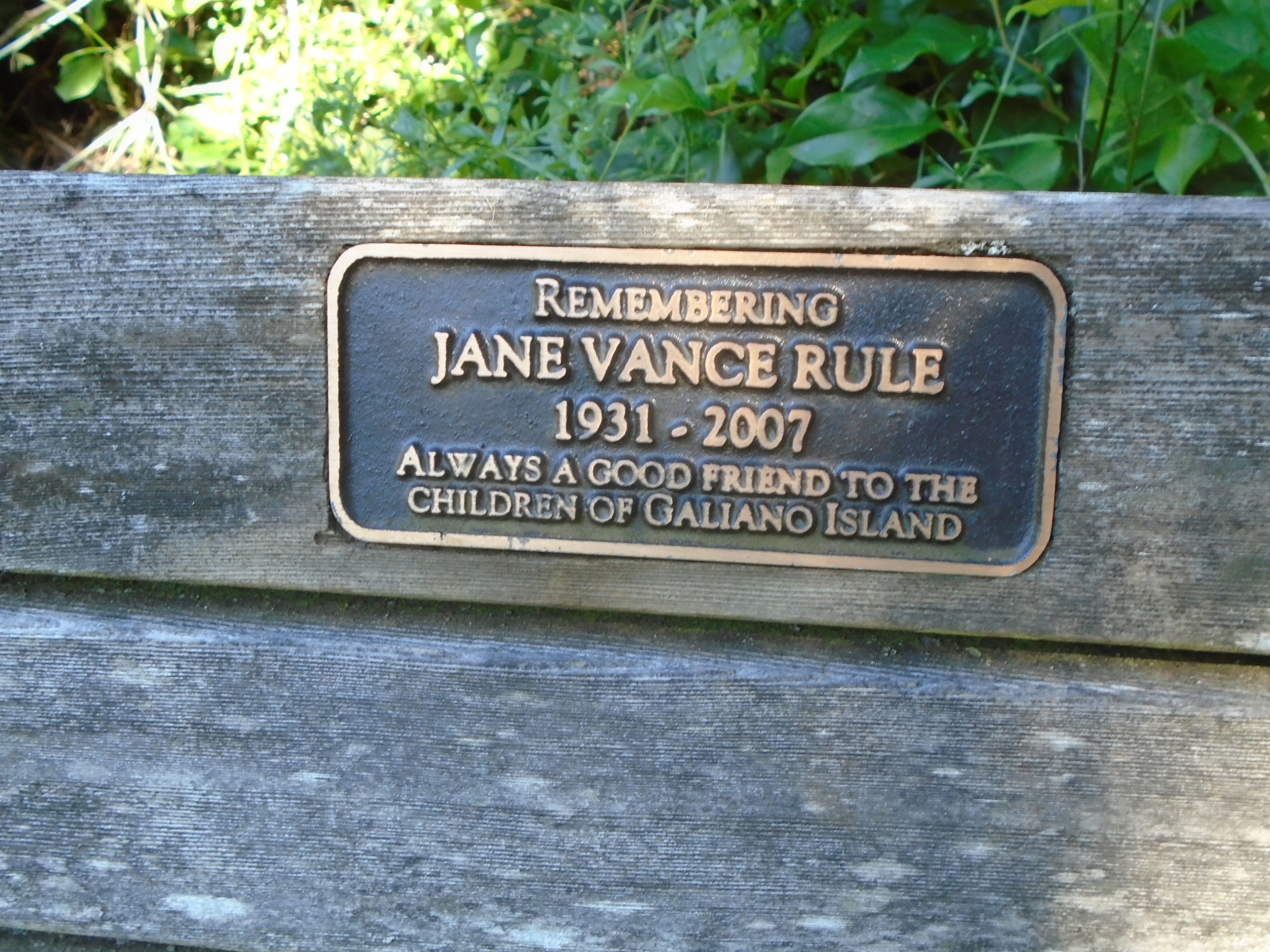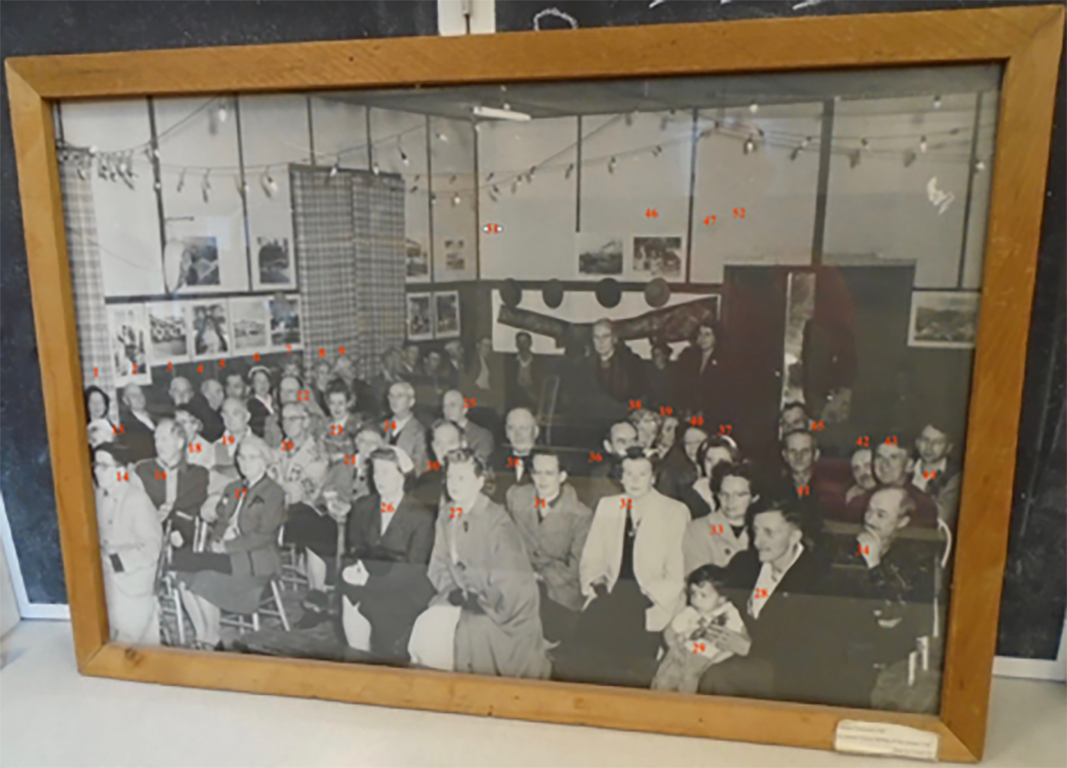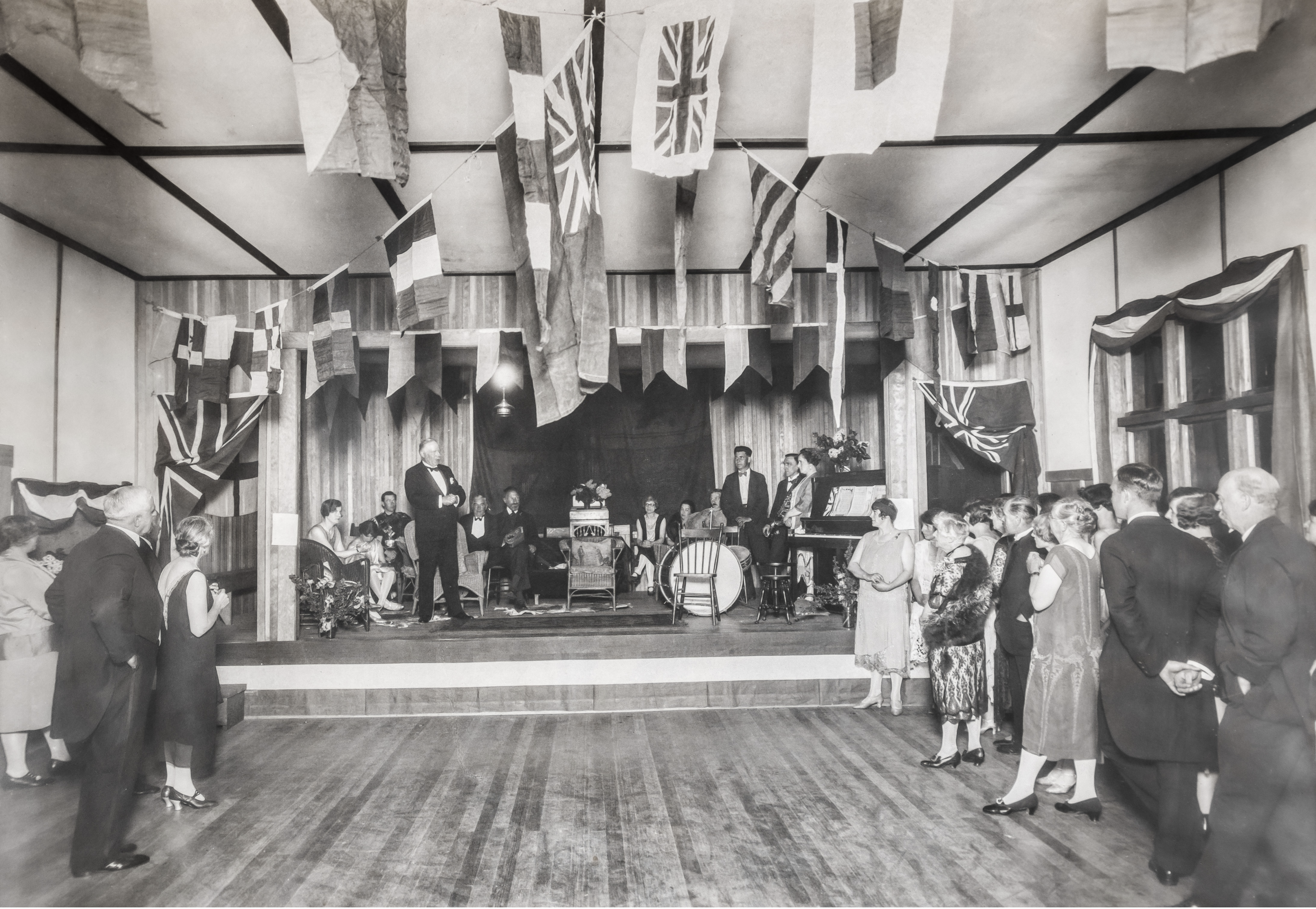By Allan Forget
(with notes from the archives of the Galiano Club & the Sidney Review.)
Photo by Mr. Donald New
Ninety-two years ago this month an event was held that is considered to be the “official opening” of the building we now know as the Galiano Community Hall.
The Galiano Club was founded in December, 1924. One of the Club’s main objectives was “to build a public hall”. Construction of such a building began the following year on land donated by Mr. Stanley Page; it was ready for occupancy by 1926.
Early in 1929 the BC Lieutenant Governor, His Honour, R.Randolph Bruce, accepted an invitation to visit Galiano extended by the Galiano Island Development Association. All island organizations were encouraged to plan events to occupy His Honour during the day-long visit. The Galiano Club decided to hold an official opening of the Hall and sponsor a formal evening dance.
The Lieutenant Governor and his party arrived by rented yacht named ‘Locaber No More’, at the Sturdies Bay wharf on the morning of May 29th, 1929. The Government House bagpiper, a Military Aide de Camp, accompanied Mr. Bruce as did his niece, Miss Helen Mackenzie. (Mr. Bruce was a widower. Protocol at the time required that the LG always have a female… and a serving military officer… at his side while carrying
out duties as the King’s representative.) Among those greeting them was Vice-Admiral Paul Scoones, Secretary of the Galiano Club Board. His Honour inspected a group of Sea Scouts and Girl Guides, toured the Galiano Post Office, and was driven along a “scenic driveway bordering the Bay of Whales”. Miss Mackenzie was later presented with a bouquet of “no fewer than fifty-two varieties of wild flowers” by Miss Edwina Morgan.
Mr. Scoones eventually escorted LG Bruce to the “newly erected Galiano Hall” (not until the 1970s would the building become known as the Galiano Community Hall) where he was welcomed by Galiano Club President, Mr. Arthur Lord. A brief ceremony followed in which His Honour declared that the Hall was “open for business and for pleasure”. Before leaving the Hall site His Honour inspected the “large and beautiful grounds adjacent, so tastefully laid out by members of the Galiano League of Mercy.”
Afterwards, the Sea Scouts took charge of the Lieutenant Governor, sailing him in their barge, Roaring Rip, to nearby Gossip Island where an afternoon tea was served … complete with shrimps!!
His Honour was rowed back to Galiano later in the day for his invited attendance at the Galiano Club sponsored dance. Held in the main room of the hall, the “Club room”, the dance was well attended, regarded as it was as the social event of the year. The dance event was recorded in photographs by Club member Donald New. An enlargement of one of these photos was eventually framed and now hangs on one of the Hall walls.
In this photo we see the men wearing formal “cutaways” and seamed trousers, the women wearing the fashionable waistless dresses, thick stockings and buckle shoes. The Club has hired Mrs.Eaton’s “far-famed” three piece orchestra to play, and has purchased “on trial” a Bosch gramophone to provide supplementary music. The hall ceiling is decorated with rows of an assortment of nautical signal flags and national flags.
Several windows and doors are draped with oversized Union Jack and Red Ensign flags, the window frames with looped bunting. Large bouquets of flowers are on stage where His Honour seems to be addressing the crowd, his niece and his ADC seating nearby.
Mr. Scoones had provided, from his own home, framed prints of works by the currently popular American artist Edward Hopper, and some “Mediciprints” to decorate the walls. Extra kerosene lamps (the hall, like most island homes, had yet to be wired for electricity) had been brought in to supply the necessary illumination.
After spending the night at the Farmhouse Inn, His Honour sailed back to Victoria having much enjoyed the island scenery and also, according to a local newspaper report, “professing a heart-felt admiration for the public spirit which had converted Galiano Island from an ordinary island to a
centre of commerce and tourist activity.”




Leave A Comment
You must be logged in to post a comment.